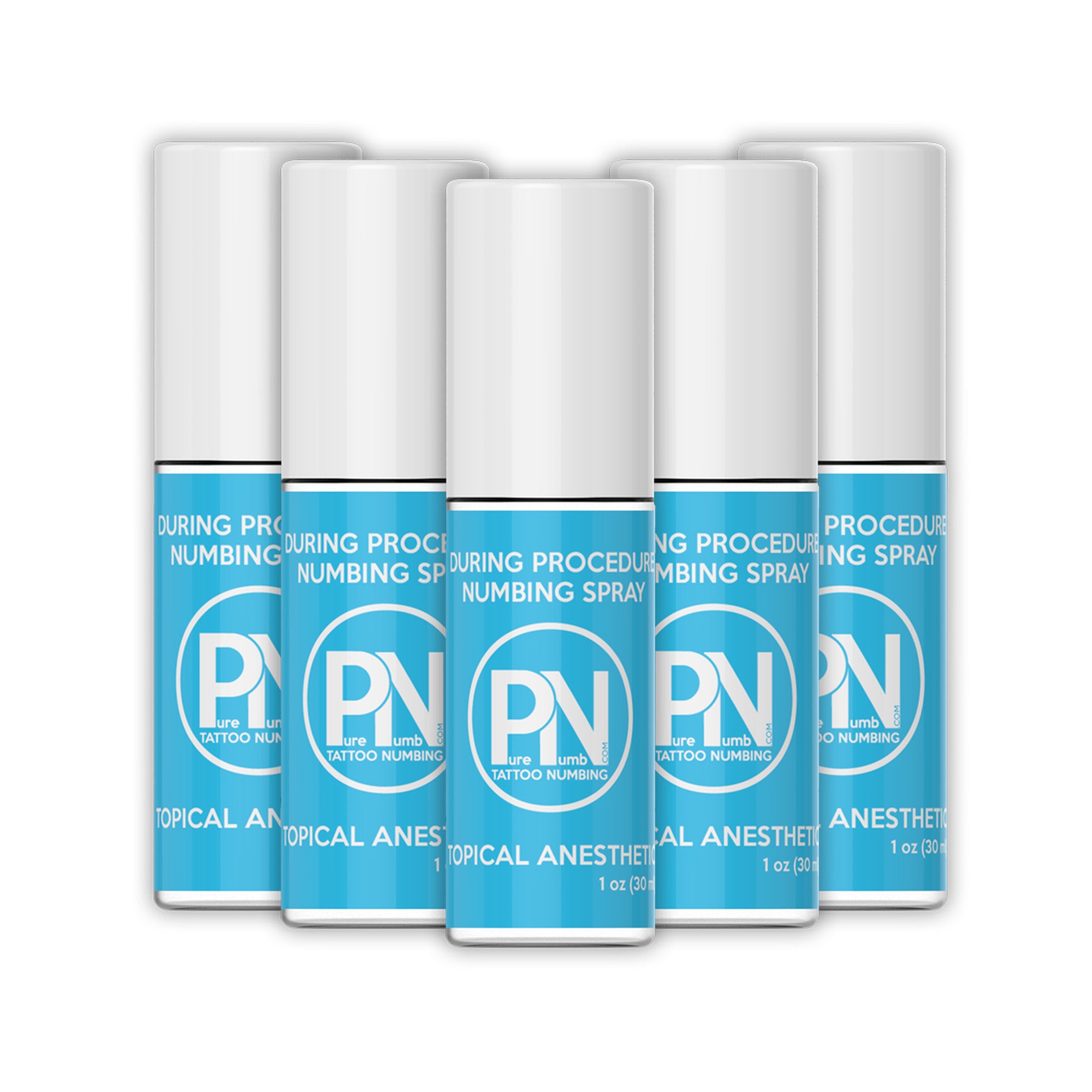Experience a Pain-Free Tattoo: Discover Numbing Solutions for Tattoos
Understanding Tattoo Pain and Why It Occurs
Tattoo pain varies significantly from person to person and depends on several factors, including your tolerance for pain, the tattoo's location, and the artist's technique. When a tattoo is applied, the needle repeatedly pierces the skin, depositing ink beneath the surface. This action triggers the body’s pain receptors, which is why the sensation can range from a mild scratch to a burning or stinging sensation. Areas with more nerves, like ribs or wrists, tend to be more painful, which is why many people seek ways to make the experience less intense.
Numbing products, such as Numb Gel for Tattoos and numbing sprays, offer a simple solution by numbing the skin and dulling the pain receptors. This not only provides physical relief but also reduces the anxiety some may feel about undergoing a painful tattooing process.
How Does Numb Gel for Tattoos Work?
The Numb Gel for Tattoos is a topical anesthetic that temporarily numbs the skin. It works by blocking the pain signals from reaching the brain, allowing you to experience a significant reduction in pain during your tattoo session. Generally, these gels contain lidocaine, a powerful numbing agent that has been used for decades in medical procedures. When applied correctly, numb gel begins to work within 30 minutes to an hour, providing hours of pain relief, which is often enough to cover a single tattoo session.
The application process is simple. Before the tattoo session, apply a thick layer of the gel to the area, and cover it with a plastic wrap to allow it to absorb into the skin. This ensures that the numbing effect penetrates deeply and remains effective for a prolonged period. However, it’s always best to discuss this with your tattoo artist before using any product, as they can provide guidance on application and timing.
Benefits of Using Numb Gel for Tattoos
Using a Numb Gel for Tattoos can make a noticeable difference in your tattooing experience. It reduces the pain, which is particularly helpful for those with low pain tolerance. With less discomfort, you’ll find it easier to relax, and the artist can complete the tattoo without needing to stop for breaks due to pain. This can lead to a quicker and smoother session. Additionally, numbing gels are a great option for larger pieces or tattoos on sensitive areas, as they allow you to endure the process for longer without feeling overwhelmed by pain.
For tattoo artists, working on a client who is comfortable and still can improve their focus and precision. Less fidgeting due to pain means that the artist can perform detailed work more effectively, which ultimately benefits the final outcome.
Numbing Spray for Tattoo: An Alternative Solution
A Numbing Spray for Tattoo works similarly to numb gels but has its unique advantages. Unlike gels, sprays are easier to apply over larger areas and don’t require as much preparation. This makes them a convenient option for individuals looking for quick, on-the-go relief. Numbing sprays also contain lidocaine or benzocaine, which are fast-acting anesthetics, allowing them to take effect within minutes after application.
The spray is especially helpful during the tattooing process. As the tattoo artist works, they can apply the spray to areas that might be losing the numbing effect of the initial gel. This layer-by-layer approach ensures consistent relief throughout the entire session.
Choosing Between Numb Gel and Numbing Spray for Tattoo Sessions
Choosing between Numb Gel for Tattoos and Numbing Spray for Tattoo ultimately depends on your needs, tattoo location, and personal preferences. Numb gels are typically preferred for smaller tattoos or specific areas where deeper numbing is necessary, as they allow for a concentrated application. They are also great if you want to prepare your skin before the tattoo process, as the gel can be applied an hour beforehand.
Numbing sprays are more versatile and are ideal for touch-ups during the tattoo session. They provide quick relief, making them effective for areas that become painful halfway through the process. Some people even use both products in combination, beginning with a numb gel and then using a numbing spray as needed to maintain the numbing effect.
Safety Tips and Precautions for Numbing Products
While numbing products are generally safe, it’s essential to use them correctly to avoid adverse reactions. Always do a patch test on a small area of skin to check for any allergies or sensitivity to the ingredients, as lidocaine and benzocaine can sometimes cause mild irritation. Avoid overusing the product, as applying too much can lead to numbness beyond the tattoo area.
It’s also crucial to purchase numbing products from reputable sources and check that they are designed specifically for tattoos. Some generic numbing agents may not be formulated for extended skin contact or could interfere with the ink, affecting the tattoo’s final appearance.
What to Expect During a Tattoo Session with Numbing Products
Using Numb Gel for Tattoos or Numbing Spray for Tattoo can create a more pleasant tattooing experience, but it’s important to manage your expectations. These products do not eliminate pain entirely, and you may still feel some pressure or mild discomfort, especially during shading or lining. However, with the numbing effect in place, the overall sensation is far more tolerable, and many people find they can handle longer sessions and complex designs without breaks.
Once your tattoo is finished, follow the aftercare instructions provided by your artist. The numbing effect will wear off within a few hours, and any lingering pain will subside gradually as the skin heals.




Comments
Post a Comment